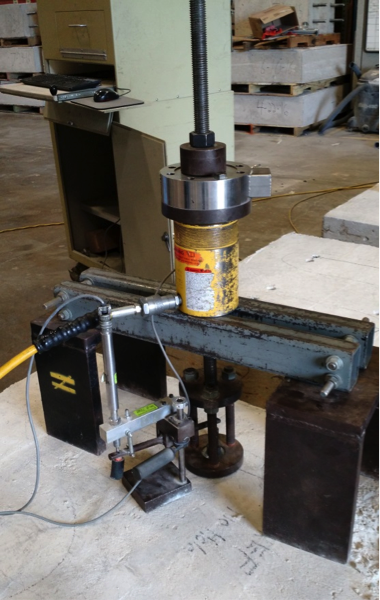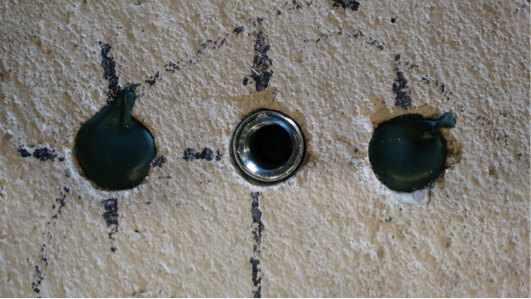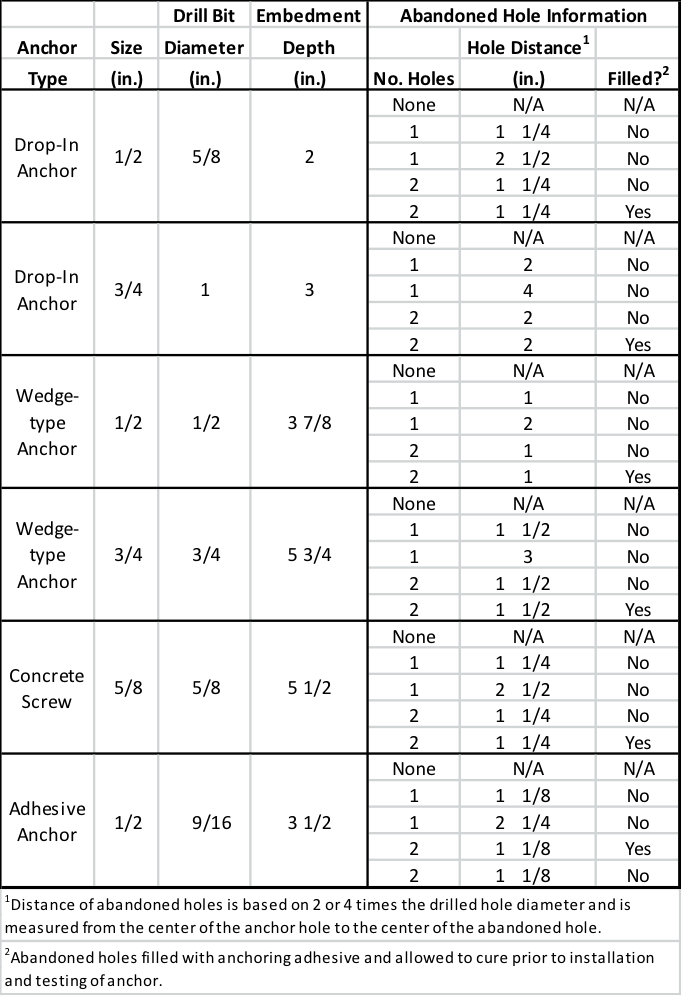 This week’s post comes from Dan Harmon, an R&D engineer for Simpson Strong-Tie’s Infrastructure-Commercial-Industrial (ICI) group. Dan specializes in post-installed concrete anchor design and spent a decade managing Simpson’s anchor testing lab, where he developed extensive knowledge of anchor behavior and performance. He has a Bachelor of Science in mechanical engineering from the University of Illinois Urbana-Champaign.
This week’s post comes from Dan Harmon, an R&D engineer for Simpson Strong-Tie’s Infrastructure-Commercial-Industrial (ICI) group. Dan specializes in post-installed concrete anchor design and spent a decade managing Simpson’s anchor testing lab, where he developed extensive knowledge of anchor behavior and performance. He has a Bachelor of Science in mechanical engineering from the University of Illinois Urbana-Champaign.
Designers and engineers can spend hundreds of hours on detailed drawings of structures, but there are often conditions and coordination that can change well-planned details and drawings. As we all know, paper and reality don’t always agree. Anchorage locations can move as a result of unforeseen circumstances such as encountering reinforcing bars in an existing concrete slab or interference between different utility trades.
With post-installed anchors, one particular jobsite change may require abandoning a hole that has been drilled, leaving the final anchor location adjacent to the abandoned hole. When a hole for an anchor is drilled but never used, it essentially creates a large void in the concrete. Depending on where this void is located in relation to an installed anchor, there is potential for the capacity of that anchor to be reduced. To give guidance on this situation to specifiers, users and contractors, Simpson Strong-Tie conducted a large series of tests in their ISO 17025–accredited Anchor Systems Test Lab in Addison, Illinois.
To evaluate the effect of abandoned holes located adjacent to post-installed anchors, we performed tension tests meeting the requirements of ASTM E488-15 (see Figure 1). A variety of anchor types with common diameters were tested:
- Drop-in anchors (1/2″ and 3/4″ diameter)
- Wedge-type anchors (1/2″ and 3/4″ diameter)
- Concrete screws (1/2″ diameter)
- Adhesive anchors with threaded rod (1/2″ diameter)

Each anchor type and diameter was tested under five different conditions:
- No abandoned hole near the installed anchor. This is considered the reference condition to which other tests are to be compared.
- One abandoned hole at a distance of two times the hole diameter (2d) away from the installed anchor. See Figure 2.
- One abandoned hole at a distance of four times the hole diameter (4d) away from the installed anchor.
- Two abandoned holes, each at a distance of two times the hole diameter (2d) away from the installed anchor. In test conditions with two holes, the holes were located on either side of the installed anchor, approximately 180º from each other. See Figure 3.
- Two abandoned holes, each at a distance of two times the hole diameter (2d) away from the installed anchor, with the holes refilled with a concrete anchoring adhesive that was allowed to cure fully prior to testing. See Figure 4.



This test program is summarized in Table 1. In all cases, the abandoned hole was of the same diameter and depth as the hole prescribed for the installed anchor.

Five tests for each anchor under each condition were tested, and the mean and coefficient of variance of each data set were calculated. These calculated values were used to compare the different conditions.
Across the different anchor types and diameters, the test results showed a number of general rules that held true.
Summary Results
Abandoned holes that are 2” or more away from the anchor have little to no effect on the tension performance of the anchor. Compared to the reference condition with no abandoned hole near the anchor, conditions where the abandoned hole was sufficiently far away were found to be essentially equivalent. This equivalence held true even for anchor types that create expansion forces (drop-in and wedge-type anchors) during their installation.
Two abandoned holes have the same effect on performances as one, regardless of distance from the anchor. This testing showed that adding a second abandoned hole near an installed anchor did not adversely affect tension performance in a significant way. Even within distances of 2 inches, performance did not drop substantially – if at all – in conditions involving two abandoned holes as compared to one.
Filling abandoned holes with an anchoring adhesive prior to installation of the anchor improves performance. In all cases tested, filling abandoned holes with adhesives resulted in increased performance compared to leaving the holes empty. In a majority of cases, performance with filled holes was equivalent to performance in the reference condition regardless of the distance from the anchor.
When the abandoned hole is more than two times the drilled hole diameter but less than 2″from the anchor – and left unfilled – the testing showed a loss in performance. Not surprisingly, the degree of that loss was dependent on the type of anchor. Table 2 shows the capacity reduction compared to the reference condition in testing with expansion anchors. Table 3 shows the same results for concrete screws and adhesive anchors. Conservative suggested performance reductions in these conditions would be 20% for expansion anchors and 10% for concrete screws and adhesive anchors.


In an ideal world, the engineer’s designs could be followed at all times at the jobsite. But we don’t live in an ideal world. Good engineering judgment is needed in situations where variation is required, and having data to support those decisions is always helpful. In the case of abandoned holes near post-installed anchors, it’s Simpson Strong-Tie’s hope that this testing provides additional guidance for the designer, inspector, and jobsite worker.




Thanks, this is useful information. Could you comment on anchor installation next to abandoned anchors? What reduction factors would you recommend? Is it better cut off the anchor flush or remove it and fill the hole? What about old non-epoxy drop-in anchors? What if the anchor was never loaded in tension vs an anchor that was loaded?
Thanks for the question!
Each situation there would be somewhat unique, as the type of abandoned anchor, the type of anchor you wish to install, the distance between them, and other factors could influence behavior and performance.
As a general rule, I would suggest that if the abandoned anchors are not expansion-types- such as adhesive anchors and concrete screws- would have little to no effect on the capacity of the anchor you’re looking to install. With an adhesive anchor, cutting the anchoring element (threaded rod or rebar) is acceptable. In that case, you’d be in a similar situation as a re-filled abandoned hole as described above. Similarly, if you remove a concrete screw, you would have what is essentially an abandoned hole as described above.
Whether these abandoned anchors were previously loaded or not should not make a difference. A properly designed and loaded concrete anchorage should not result in any permanent damage to the system.
With expansion anchors, the question becomes more complicated. The forces created during installation induce stress into the system (concrete) that can potentially affect the performance of nearby anchors. It is not a coincidence that expansion anchors generally have larger published critical spacing (this is defined as the minimum distance between two like anchors such that they act independently). The expansion forces may also have been increased if the anchor had been loaded. My recommendation for best practices in these situations would be:
1. Determine the critical spacing of the installed anchor and avoid installing the new anchor within that area.
2. Relieve as much of the expansion forces as possible. This should be able to be done with torque-controlled anchor types like wedge and sleeve anchors: loosen the nut and tap the stud down with a hammer until it bottoms out in the hole. You can cut whatever portion is left extended above the concrete surface at this point. While this should relieve expansion forces, there may have been localized damage to the concrete in the vicinity of the anchor. Because of this, the situation is not the same as the abandoned hole conditions discussed above.
As always, each situation calls for good engineering judgment and potentially different solutions. If you have a specific case, I would recommend calling Simpson Strong-Tie at (800) 999-5099 and asking for the Technical Support Department. From there, you should be able to discuss your condition with us.
Thank you again!
Thanks. Are the other results (for all cases shown in Table 1) available to be shared?
Ryan, thank you for the question.
We chose to keep the amount of data published here to a minimum. As you can see, the program was fairly intensive, with different combinations of conditions being evaluated. There was a lot of data to dig through and a significant amount of analysis to perform to see the overall trends discussed here.
Thanks Dan for the response.
Speaking of trends, you mentioned “Abandoned holes that are 2” or more away from the anchor have little to no effect on the tension performance of the anchor”, but in the article you mention testing the variable “4d”. Did you notice that the distance of the abandoned hole was not dependent on the anchor size?
Yes! It was the first thing we noticed once the data was complete. We specifically chose two diameters for the expansion-type anchors for this reason. In no case- regardless of anchor type or diameter- did we see more than a 5% reduction when an abandoned hole (or two) was 2 in. or greater away from the anchor. Because of the relatively large variance in post-installed anchor testing, being within 5% is generally considered statistically equivalent.
Thanks Dan. Your explanation helped clarify things; I wasn’t sure what the summary was based on (I only saw tables 2 and 3).
It should also be explicitly stated that we investigated anchors that are of a common size. Looking at very large diameter anchors (1 in. or larger) was outside of the scope. Obviously, those may behave differently at a distance of 2 in. from an abandoned hole.